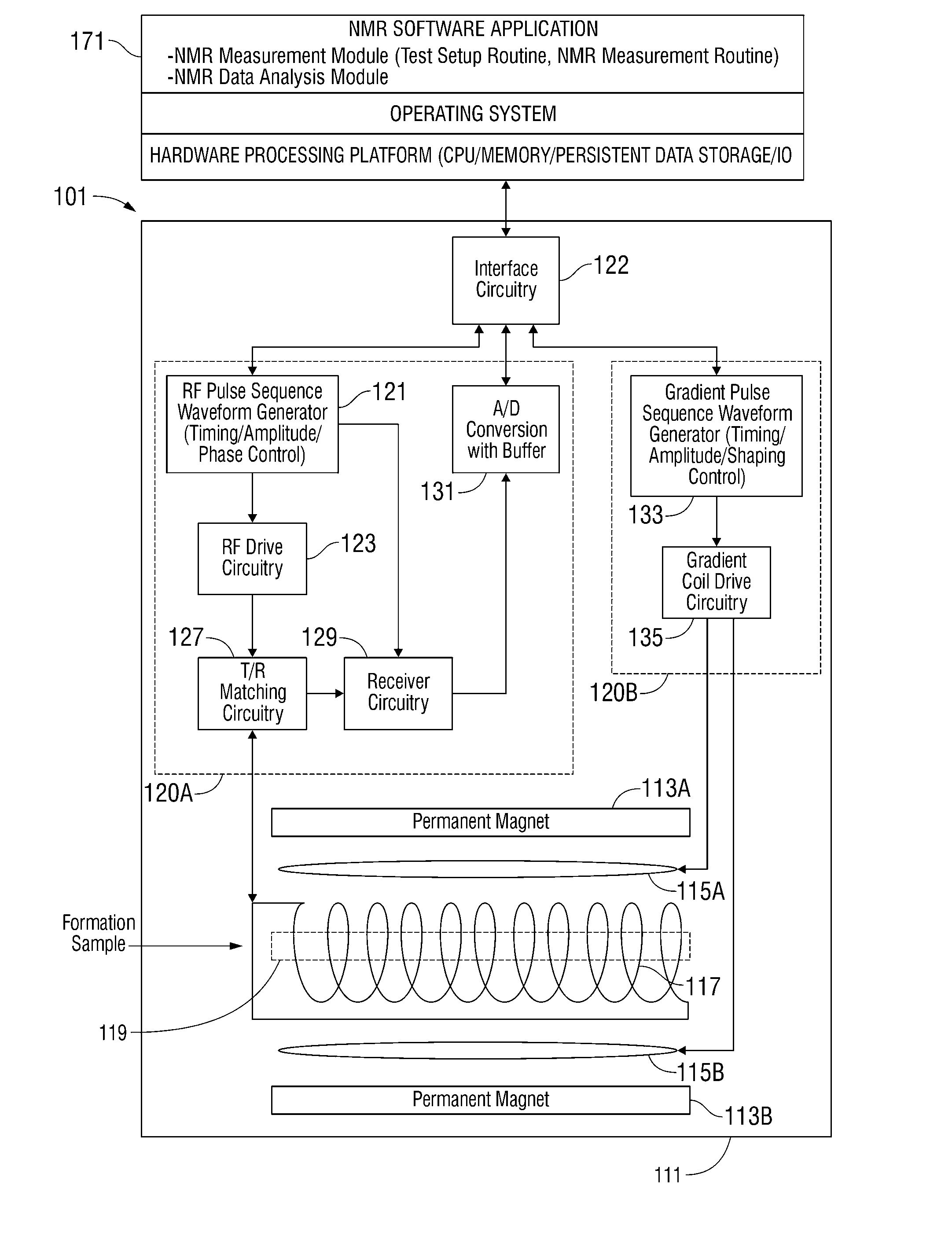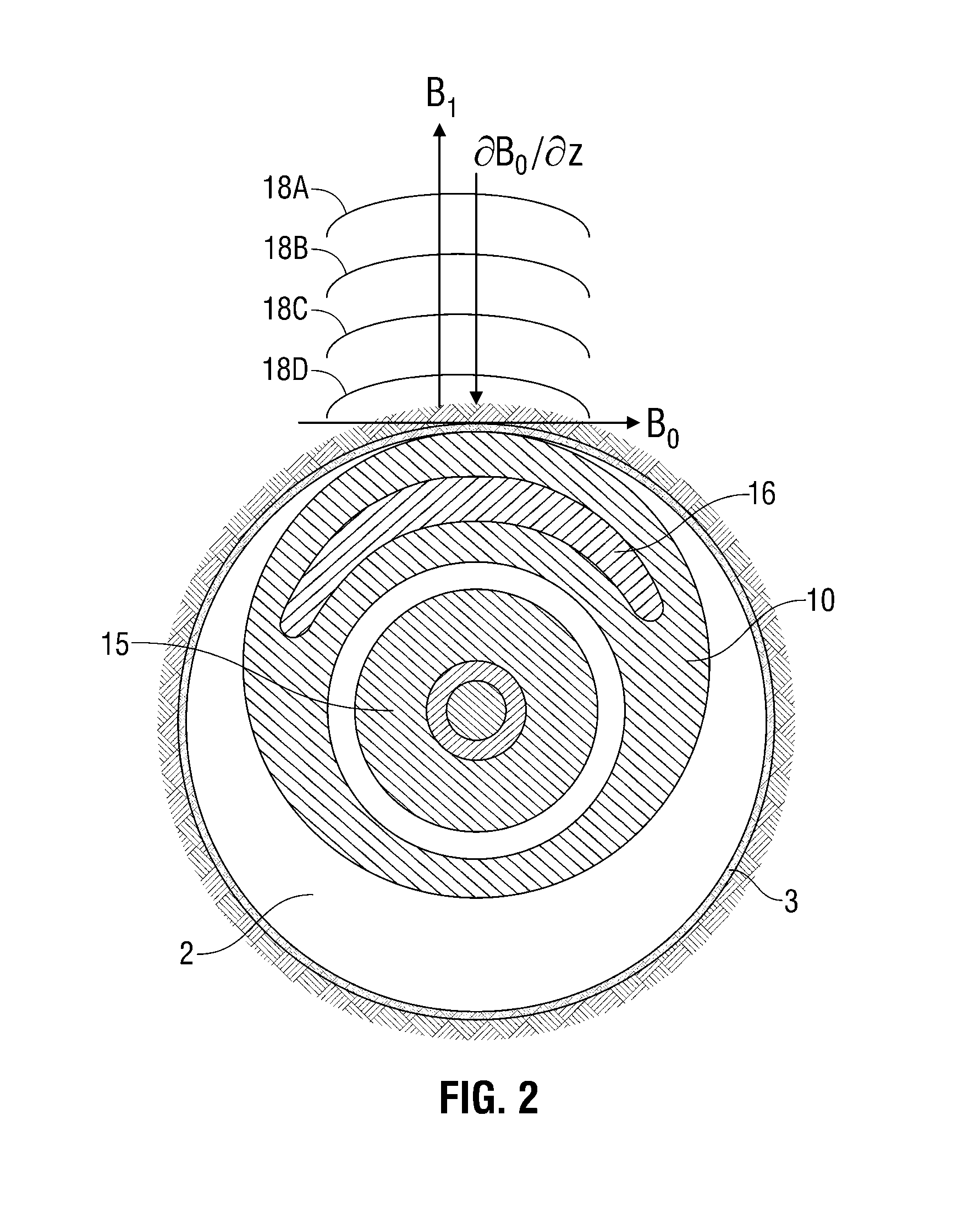System and method for emulating nuclear magnetic resonance well logging tool diffusion editing measurements on a bench-top nuclear magnetic resonance spectrometer for laboratory-scale rock core analysis
a technology of diffusion editing and nuclear magnetic resonance, applied in the field of laboratory and borehole instruments, can solve problems such as uncertainty and ambiguities, and achieve the effects of improving oil recovery, enhancing oil recovery, and improving the displacement and recovery of reservoir hydrocarbons
- Summary
- Abstract
- Description
- Claims
- Application Information
AI Technical Summary
Benefits of technology
Problems solved by technology
Method used
Image
Examples
Embodiment Construction
[0043]Embodiments of the invention relate to apparatus and methods for determining reservoir fluid properties using an NMR well logging tool. FIG. 1 shows an exemplary apparatus for investigating a subsurface formation 1 traversed by a borehole 2. The borehole 2 is typically, although not necessarily, filled with a drilling fluid or mud (which contains finely divided solids in suspension) with mudcake 3 on the walls of the borehole. A downhole logging tool 10 is suspended in the borehole 2 on an armored cable 11, the length of which substantially determines the relative depth of the logging tool 10. The cable length is controlled by suitable means at the surface such as a drum and winch mechanism (not shown). Surface equipment, represented at 12, can be of conventional type, and can include a processor subsystem and communicates with the logging tool 10. The logging tool 10 has a face 13 shaped to intimately contact the borehole wall, with minimal gaps or standoff, and a retractable...
PUM
 Login to View More
Login to View More Abstract
Description
Claims
Application Information
 Login to View More
Login to View More - R&D
- Intellectual Property
- Life Sciences
- Materials
- Tech Scout
- Unparalleled Data Quality
- Higher Quality Content
- 60% Fewer Hallucinations
Browse by: Latest US Patents, China's latest patents, Technical Efficacy Thesaurus, Application Domain, Technology Topic, Popular Technical Reports.
© 2025 PatSnap. All rights reserved.Legal|Privacy policy|Modern Slavery Act Transparency Statement|Sitemap|About US| Contact US: help@patsnap.com



